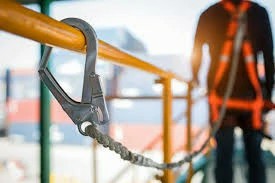Navigating the Perils of Non-Compliance with Working at Heights Regulations in Ireland
Working at Heights is a critical aspect of occupational safety that cannot be overlooked. Ireland's stringent regulations aim to protect workers from potential hazards while performing tasks above ground level. However, many businesses, either due to ignorance or negligence, fail to comply with these regulations. The consequences of such non-compliance can be devastating, leading to legal penalties, hefty financial losses, and irreparable reputational damage.
The Legal Frame: What Businesses Need to Know
The legal landscape surrounding Working at Heights regulations in Ireland is designed to ensure worker safety. Non-compliance can result in severe legal implications, ranging from fines to imprisonment for management, depending on the severity of the violation.
- Fines: Depending on the violation, businesses can face significant fines imposed by health and safety authorities. These fines can escalate based on the number of previous violations, making the financial risk considerable.
- Legal Action: Victims of accidents due to non-compliance may file lawsuits against employers, alleging negligence. Legal battles can be lengthy and expensive, often resulting in settlements that can cripple small to medium-sized businesses.
- Criminal Charges: In severe cases, manager-level personnel may face criminal charges, leading to custodial sentences in cases where gross negligence can be proven.
Financial Fallout: Hidden Costs of Non-Compliance
Beyond immediate fines and legal fees, the financial repercussions of failing to comply with Working at Heights regulations can accumulate over time. Understanding these hidden costs is vital for business owners.
- Increased Insurance Premiums: Non-compliance can lead insurers to classify companies as high risk, resulting in dramatically increased premiums. Insurance costs can skyrocket after a claim is made due to a workplace accident.
- Loss of Contracts: Companies known for safety violations can face exclusion from contracts, especially from clients prioritizing workplace safety. This loss of business can be significant.
- Rework and Delays: Accidents can cause downtime and delays in projects, leading to financial losses from halted work and a potential backlog of other projects.
Reputational Damage: The Unseen Consequences
A company's reputation is one of its most significant assets, and non-compliance with safety regulations can severely tarnish this. The visible ramifications can lead to:
- Negative Publicity: Media exposure of safety violations can damage a company's public image, creating lasting distrust among clients and consumers.
- Employee Morale: Workers are more likely to experience decreased morale and productivity if they do not feel safe in their work environment, leading to high turnover rates.
- Market Competitiveness: Companies known for safety violations may struggle to compete with those that maintain high standards, further impacting their bottom line.
Real-World Consequences: Case Studies
Various companies have faced dire consequences due to non-compliance with Working at Heights regulations. Here are a few notable cases:
- Construction Firm A: After a worker fell from scaffolding without proper safety measures, the company was fined heavily and faced multiple lawsuits from the injured worker. The incident led to a significant increase in their insurance premiums and loss of several contracts.
- Retail Chain B: A store renovation project resulted in a critical injury when safety protocols were ignored. The company faced a fine and saw a harsh backlash from the community, damaging its reputation and leading to a reduction in customer traffic.
Protecting Your Business: The Importance of Training
Investing in Working at Heights Training is crucial for businesses that seek to comply with regulations and protect their employees. A properly implemented training program can:
- Enhance employee awareness of hazards associated with working at heights.
- Provide essential skills for using safety equipment effectively.
- Foster a culture of safety, leading to less workplace accidents and improved overall morale.
Conclusion: A Call to Action for Business Owners
The risks associated with failing to comply with Working at Heights regulations are far-reaching and can cripple businesses in various ways. Investing in Certified Working at Heights Training is not just a legal requirement; it's a smart business decision. Ensure that your workforce is well-trained, and that safety protocols are strictly adhered to. For more information about Working at Heights Courses available online, contact us at [email protected]. Protect your business and your employees today!



 349,500 Offered Certificates
349,500 Offered Certificates
 24/7 Online Training
24/7 Online Training
 Money Back Guarantee
Money Back Guarantee
 Fully Accredited Courses
Fully Accredited Courses
